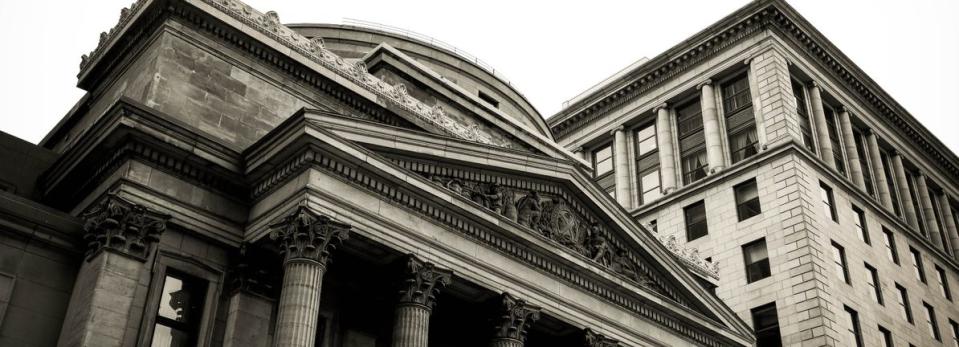How Does Bar Harbor Bankshares's (NYSEMKT:BHB) P/E Compare To Its Industry, After The Share Price Drop?

Unfortunately for some shareholders, the Bar Harbor Bankshares (NYSEMKT:BHB) share price has dived 30% in the last thirty days. That drop has capped off a tough year for shareholders, with the share price down 44% in that time.
Assuming nothing else has changed, a lower share price makes a stock more attractive to potential buyers. In the long term, share prices tend to follow earnings per share, but in the short term prices bounce around in response to short term factors (which are not always obvious). So, on certain occasions, long term focussed investors try to take advantage of pessimistic expectations to buy shares at a better price. Perhaps the simplest way to get a read on investors' expectations of a business is to look at its Price to Earnings Ratio (PE Ratio). A high P/E implies that investors have high expectations of what a company can achieve compared to a company with a low P/E ratio.
See our latest analysis for Bar Harbor Bankshares
How Does Bar Harbor Bankshares's P/E Ratio Compare To Its Peers?
We can tell from its P/E ratio of 10.15 that there is some investor optimism about Bar Harbor Bankshares. The image below shows that Bar Harbor Bankshares has a higher P/E than the average (8.8) P/E for companies in the banks industry.
Its relatively high P/E ratio indicates that Bar Harbor Bankshares shareholders think it will perform better than other companies in its industry classification. The market is optimistic about the future, but that doesn't guarantee future growth. So investors should always consider the P/E ratio alongside other factors, such as whether company directors have been buying shares.
How Growth Rates Impact P/E Ratios
Companies that shrink earnings per share quickly will rapidly decrease the 'E' in the equation. Therefore, even if you pay a low multiple of earnings now, that multiple will become higher in the future. A higher P/E should indicate the stock is expensive relative to others -- and that may encourage shareholders to sell.
Bar Harbor Bankshares saw earnings per share decrease by 32% last year. And it has shrunk its earnings per share by 2.4% per year over the last five years. This might lead to muted expectations.
A Limitation: P/E Ratios Ignore Debt and Cash In The Bank
One drawback of using a P/E ratio is that it considers market capitalization, but not the balance sheet. That means it doesn't take debt or cash into account. In theory, a company can lower its future P/E ratio by using cash or debt to invest in growth.
Such spending might be good or bad, overall, but the key point here is that you need to look at debt to understand the P/E ratio in context.
How Does Bar Harbor Bankshares's Debt Impact Its P/E Ratio?
Bar Harbor Bankshares's net debt is considerable, at 185% of its market cap. If you want to compare its P/E ratio to other companies, you must keep in mind that these debt levels would usually warrant a relatively low P/E.
The Verdict On Bar Harbor Bankshares's P/E Ratio
Bar Harbor Bankshares's P/E is 10.2 which is below average (12.9) in the US market. The P/E reflects market pessimism that probably arises from the lack of recent EPS growth, paired with significant leverage. Given Bar Harbor Bankshares's P/E ratio has declined from 14.6 to 10.2 in the last month, we know for sure that the market is less confident about the business today, than it was back then. For those who don't like to trade against momentum, that could be a warning sign, but a contrarian investor might want to take a closer look.
Investors have an opportunity when market expectations about a stock are wrong. If the reality for a company is not as bad as the P/E ratio indicates, then the share price should increase as the market realizes this. We don't have analyst forecasts, but shareholders might want to examine this detailed historical graph of earnings, revenue and cash flow.
You might be able to find a better buy than Bar Harbor Bankshares. If you want a selection of possible winners, check out this free list of interesting companies that trade on a P/E below 20 (but have proven they can grow earnings).
If you spot an error that warrants correction, please contact the editor at editorial-team@simplywallst.com. This article by Simply Wall St is general in nature. It does not constitute a recommendation to buy or sell any stock, and does not take account of your objectives, or your financial situation. Simply Wall St has no position in the stocks mentioned.
We aim to bring you long-term focused research analysis driven by fundamental data. Note that our analysis may not factor in the latest price-sensitive company announcements or qualitative material. Thank you for reading.


